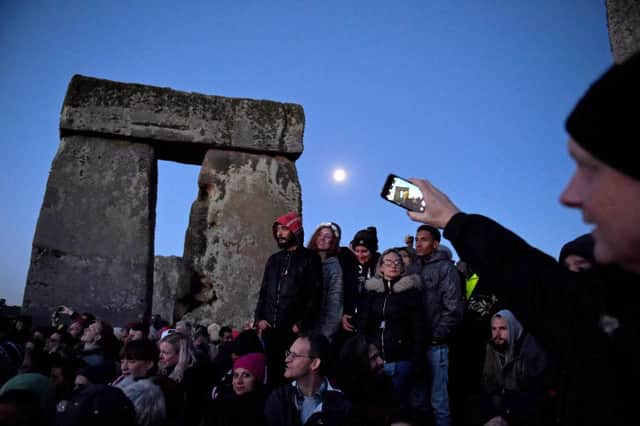Summer solstice 2021: what is midsummer, when does it happen, and how to watch Stonehenge livestream


Monday (June 21) will mark summer solstice, the longest day of the year in the northern hemisphere.
The day, also known as midsummer, is popularly associated with and celebrated at Stonehenge in Wiltshire, though other cultures around the world also celebrate the day.
Advertisement
Hide AdAdvertisement
Hide AdBut what actually is the summer solstice, and when does it officially take place?
What is the summer solstice?
The summer solstice marks the time in the year when one of the Earth’s poles has its maximum tilt towards the sun, creating the longest period of daylight.
For the northern hemisphere, this is when the North Pole is tilted towards the sun.
The summer solstice is used to mark the beginning of summer in astronomical calculations, which lasts until the autumnal equinox, falling on September 22 in 2021.
Advertisement
Hide AdAdvertisement
Hide AdIn the Gregorian calendar, however, which most of the western world uses, summer lasts from the start of June until August 31.
The summer solstice has been celebrated by cultures around the world for a number of years.
When does it happen?
This year, summer solstice falls on Monday, June 21, when the sun will rise around 4:43am and set at 9:21pm, meaning that London will see 16 hours, 38 minutes and 21 seconds of daylight.
Up in Scotland, people will get slightly more daylight due to being further north, with Edinburgh experiencing 17.5 hours of sunlight, while locals in Shetland will get almost 19 hours.
What does it have to do with Stonehenge?
Advertisement
Hide AdAdvertisement
Hide AdSummer solstice has long been associated with paganism and druids, a term referring to a high-ranking professional in Celtic culture, often a priest or healer.
Druids generally believe that Stonehenge was built by ancient Druids as a place of worship because the structure aligns with the midsummer sunrise so perfectly.
The summer solstice marks the only day when the rising sun reaches the middle of the stones, shining on the formation’s central altar.
Today, Druidry is a spiritual or religious movement which is all about revering and syncing with the natural world.
Advertisement
Hide AdAdvertisement
Hide AdEvery year, a number of modern druids travel to Stonehenge to celebrate the longest day.
Will celebrations take place at Stonehenge this year?
With the delay to lockdown easing, English Heritage announced on their website that they would be cancelling large in-person celebrations for 2021, with small, pre-booked groups permitted only.
“With this week’s news that the Government is delaying the lifting of the remaining Covid-19 restrictions on 21 June and following discussions with Wiltshire Council’s Public Health team and Wiltshire Police, English Heritage has taken the extremely difficult decision to cancel the planned Summer Solstice celebrations at Stonehenge this year,” they wrote.
“Sunset and sunrise will be live-streamed for free on English Heritage’s social media channels and will include exclusive interviews and music. English Heritage will also ensure that small, pre-booked groups from the pagan and druid community can gather on the days around the Summer Solstice to mark this important moment in their calendar,” they added.
How can I watch the livestream?
You can access English Heritage’s livestream of the solstice on their Facebook page at this link.
Comment Guidelines
National World encourages reader discussion on our stories. User feedback, insights and back-and-forth exchanges add a rich layer of context to reporting. Please review our Community Guidelines before commenting.